Designing a small music studio requires thoughtful planning to maximize creativity and functionality within limited space. Whether you’re a professional producer or a passionate hobbyist, having a dedicated studio can significantly improve sound quality and workflow. With music production becoming more accessible, home studios are increasingly popular among creators seeking convenience without compromising performance. From acoustic treatment to smart storage solutions, every detail plays a crucial role in achieving professional results. This guide shares practical, stylish small music studio ideas designed to optimize compact areas. Stay tuned for expert tips that will inspire and help you create a productive, efficient setup.
Vertical Equipment Mounting
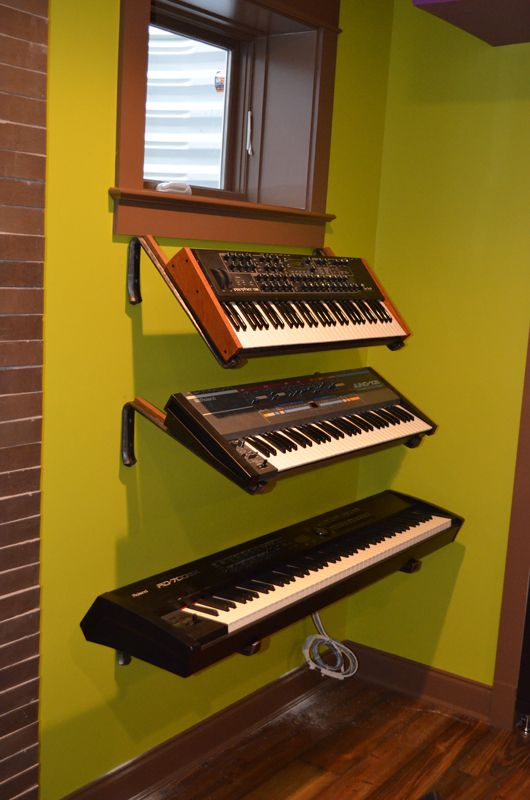
Efficient use of vertical space allows music studios to stay organized and clutter-free. Wall-mounted racks, shelves, and instrument hooks secure essential equipment like guitars, synthesizers, and audio interfaces without sacrificing valuable floor area. This approach not only frees up space but also ensures easy access during recording sessions. High-grade metal mounts or adjustable brackets provide stability for heavier gear, minimizing the risk of accidents. Installing vertical racks for MIDI controllers or effects processors enhances workflow, reducing time spent searching for tools. Acoustic panels mounted vertically around these racks also help optimize sound quality, creating a balanced recording environment. Pairing vertical mounting solutions with labeled cable hooks keeps wires neat and prevents tangling issues. By maximizing wall space, studios maintain an open, professional atmosphere, crucial for creativity. This practical layout supports scalability, enabling future equipment additions without extensive remodeling. Prioritizing vertical mounting ultimately elevates efficiency and boosts productivity in compact music studios.
Foldable Workstation Desk
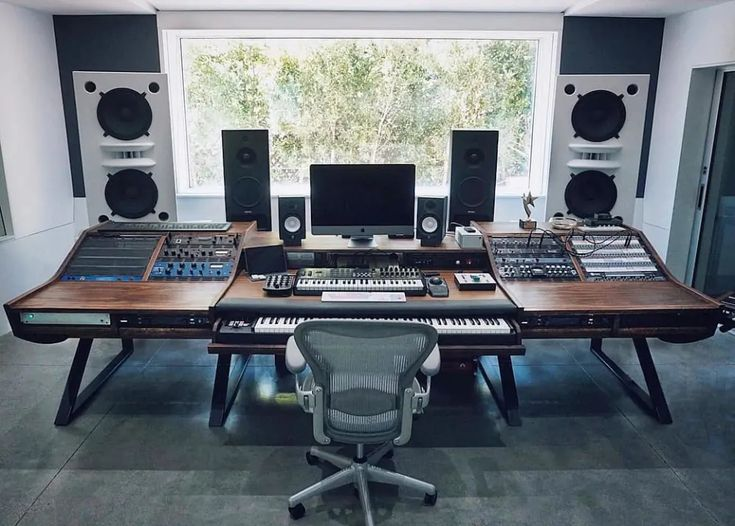
Space-saving furniture like foldable workstation desks provides an excellent solution for small music studios. These versatile desks expand when needed and tuck away effortlessly to create more floor space during recording sessions. Designed with durable materials and sturdy metal frames, they support monitors, laptops, and audio interfaces without compromising stability. Many foldable models also incorporate built-in shelves or drawers, offering convenient storage for studio essentials like headphones, MIDI controllers, and sheet music. The foldable design allows users to customize their working area based on daily tasks, switching between mixing, mastering, and recording with ease. Pairing the desk with a mobile chair further enhances flexibility in tight spaces. Foldable desks with cable management channels prevent messy wires, promoting a clean and efficient workspace. By selecting a sleek, minimalist design, studios maintain a professional aesthetic while maximizing functionality. This practical furniture upgrade streamlines workflow and keeps essential tools within arm’s reach in compact studio setups.
Under-Desk Equipment Rack
Optimizing under-desk space with equipment racks significantly boosts studio organization while maintaining accessibility. Compact racks fitted beneath the workstation provide secure housing for amplifiers, audio interfaces, patch bays, and power conditioners without cluttering the main desk surface. Built from durable metal or wood, these racks are designed to handle substantial weight, offering reliable support for heavy gear. Sliding or pull-out models make it easy to access controls and connections during sessions without crawling under the desk. Strategically positioning rack-mounted gear minimizes signal chain disruptions and ensures quick adjustments while mixing or recording. Integrated ventilation in under-desk racks prevents overheating, safeguarding sensitive electronics during long production hours. Combining this setup with labeled cabling keeps wires tidy and reduces troubleshooting time. Under-desk racks maintain a clean studio aesthetic, improving workflow efficiency. For small music studios, this storage solution balances space-saving design with practicality, supporting professional-grade audio production in compact environments.
Corner Acoustic Panels
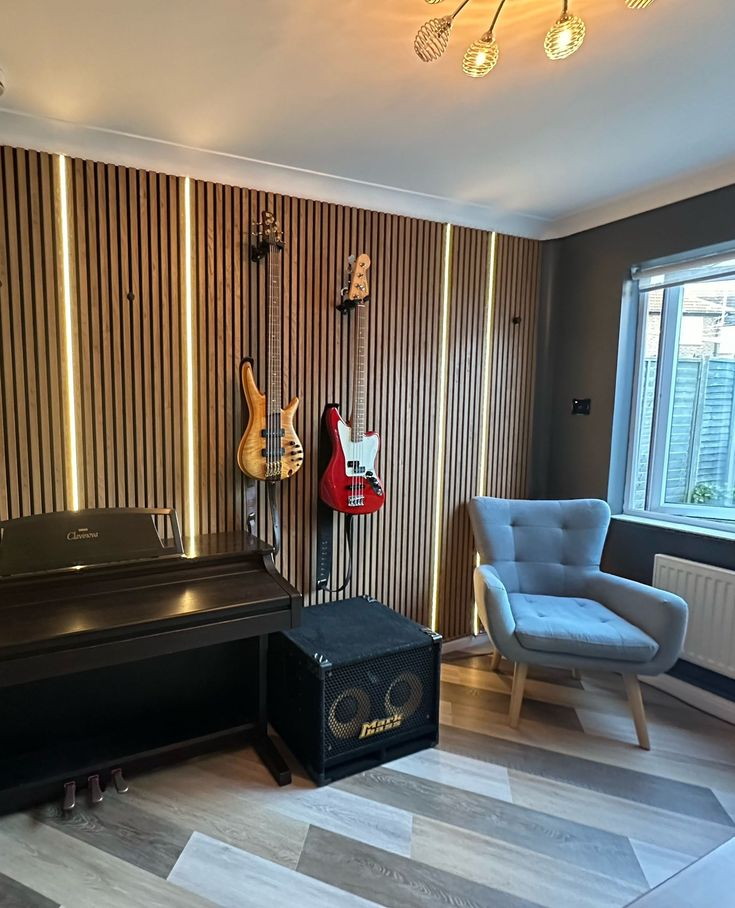
Strategically placing acoustic panels in studio corners enhances sound quality and reduces unwanted reflections. Corners often trap low-frequency sounds, causing muddiness that compromises recording clarity. Installing bass traps or thick acoustic panels specifically designed for corner mounting helps absorb these frequencies, creating a more balanced audio environment. High-density foam or fiberglass materials work best, effectively controlling both mid and low-range tones. By addressing acoustic challenges at the source, producers enjoy improved mixing accuracy and cleaner recordings. Panels installed from floor to ceiling maximize sound absorption without intruding on valuable studio space. Customizable designs and color options allow the panels to blend seamlessly with studio aesthetics while serving a functional purpose. Combining corner acoustic treatments with wall-mounted panels ensures consistent sound control throughout the room. For small music studios, investing in corner acoustic panels remains a cost-effective solution to achieve professional sound quality without needing extensive renovations or costly equipment upgrades.
Overhead Storage Shelves
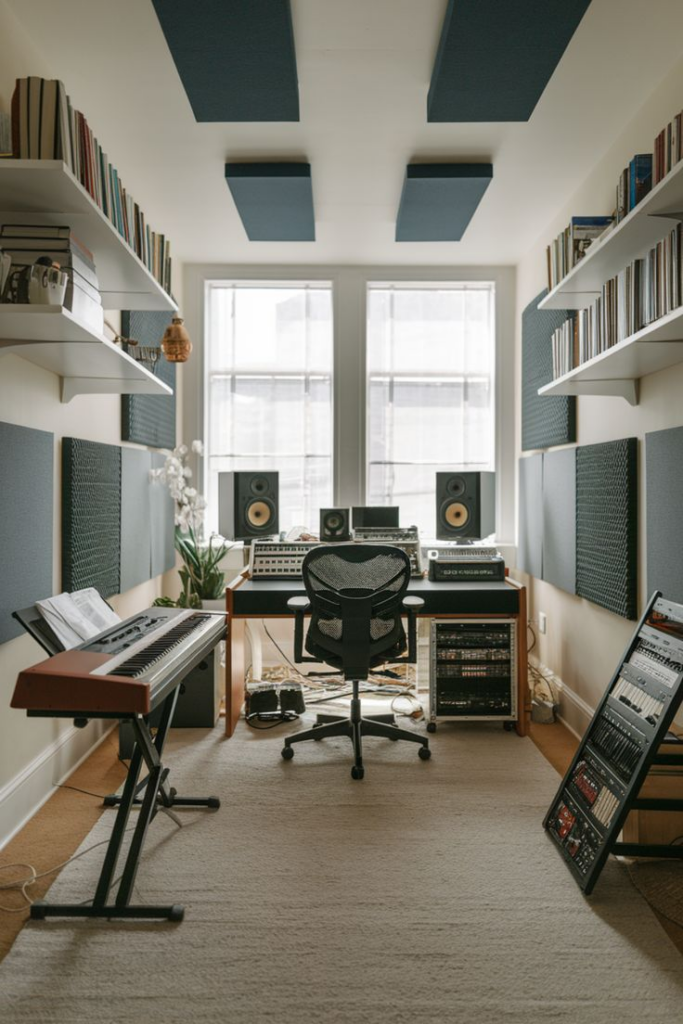
Mounting overhead storage shelves offers an ideal way to declutter limited studio space while keeping essential gear within reach. These elevated storage solutions free up floor and desk areas, creating a cleaner and more organized environment perfect for productive music sessions. Built from sturdy materials like wood or metal, overhead shelves accommodate speakers, studio monitors, microphones, and recording accessories safely. Adjustable shelves add flexibility, allowing customization based on gear size and frequency of use. Positioning shelves above mixing desks or along unused walls maximizes vertical space without compromising the studio’s layout. This storage strategy also helps protect delicate equipment from accidental damage, keeping it away from foot traffic. Integrating cable hooks or LED task lighting underneath enhances functionality further. Overhead shelving is particularly beneficial for storing items not required daily but essential for certain projects. Overall, these shelves contribute to a streamlined studio setup, enabling smooth, uninterrupted creative workflows.
Mobile Equipment Cart
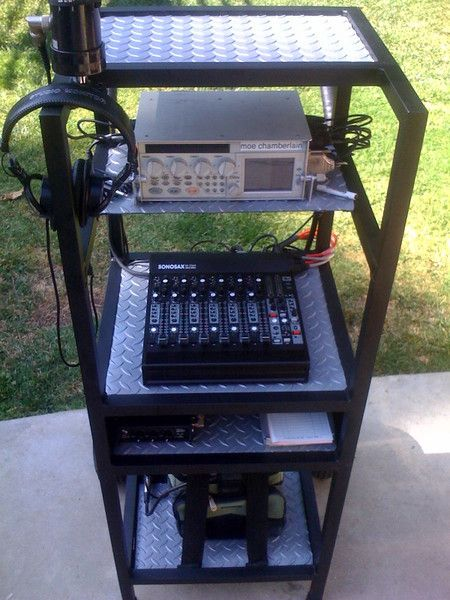
Rolling equipment carts introduce flexibility and efficiency in small studio layouts where space constraints challenge static setups. These mobile solutions allow producers to organize frequently used items like audio interfaces, laptops, headphones, and external hard drives, ensuring they remain accessible during sessions. Heavy-duty casters provide smooth movement, enabling effortless repositioning based on recording or mixing needs. Multi-tiered carts enhance storage capacity without occupying excessive floor space, while lockable wheels ensure stability during operation. Choosing a cart with built-in power strips and cable management channels minimizes clutter and streamlines connectivity. Metal or wooden designs maintain durability, supporting heavy gear without compromising aesthetics. Carts are also perfect for temporarily housing instruments or effects processors needed for specific projects, eliminating the need for permanent installations. When not in use, mobile carts easily tuck into corners or under desks. This adaptive storage solution ensures compact studios remain organized, versatile, and optimized for creative productivity.
Customized Pegboard Organizer
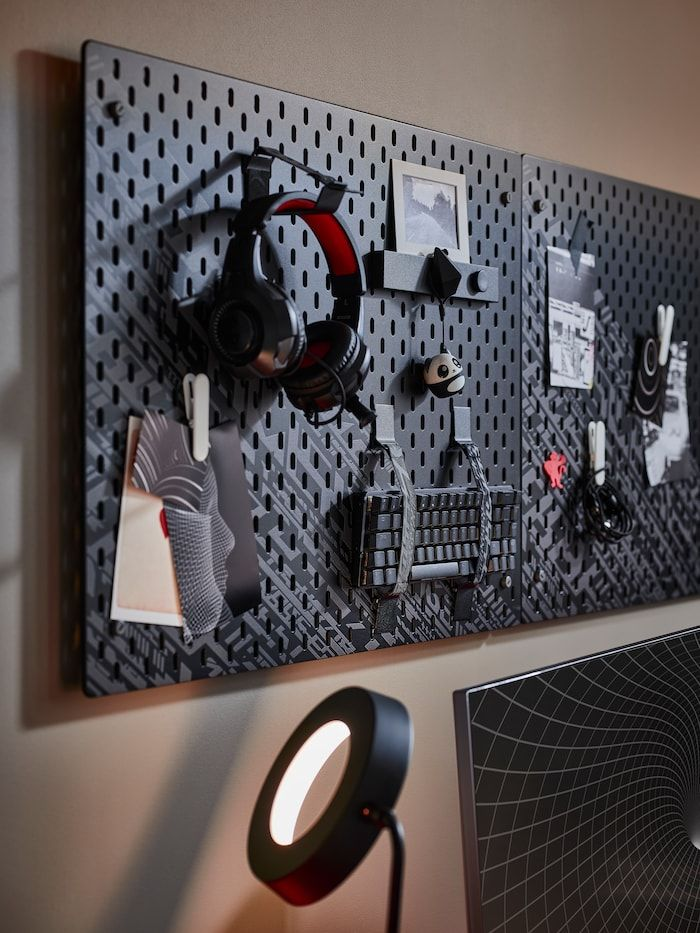
Utilizing a customized pegboard organizer adds a highly functional and visually appealing storage solution to small music studios. Pegboards allow producers to hang headphones, cables, microphones, and small tools in an easily accessible, organized manner. Durable materials like metal or thick wood ensure the pegboard withstands frequent use and supports heavier items. Adjustable hooks and holders enable users to tailor the layout based on their evolving studio needs, keeping essential gear neatly displayed. This system prevents clutter, eliminates tangled wires, and reduces setup time for each session. Mounted on a nearby wall, pegboards optimize vertical space while contributing to a streamlined, professional studio aesthetic. Color-coded hooks or labeled sections further enhance efficiency, particularly during complex projects requiring multiple devices. Combining a pegboard with nearby shelving or racks creates a cohesive organizational zone. Overall, this versatile storage solution boosts productivity, maintains order, and enhances the creative workflow within limited studio spaces.
Dual-Purpose Furniture
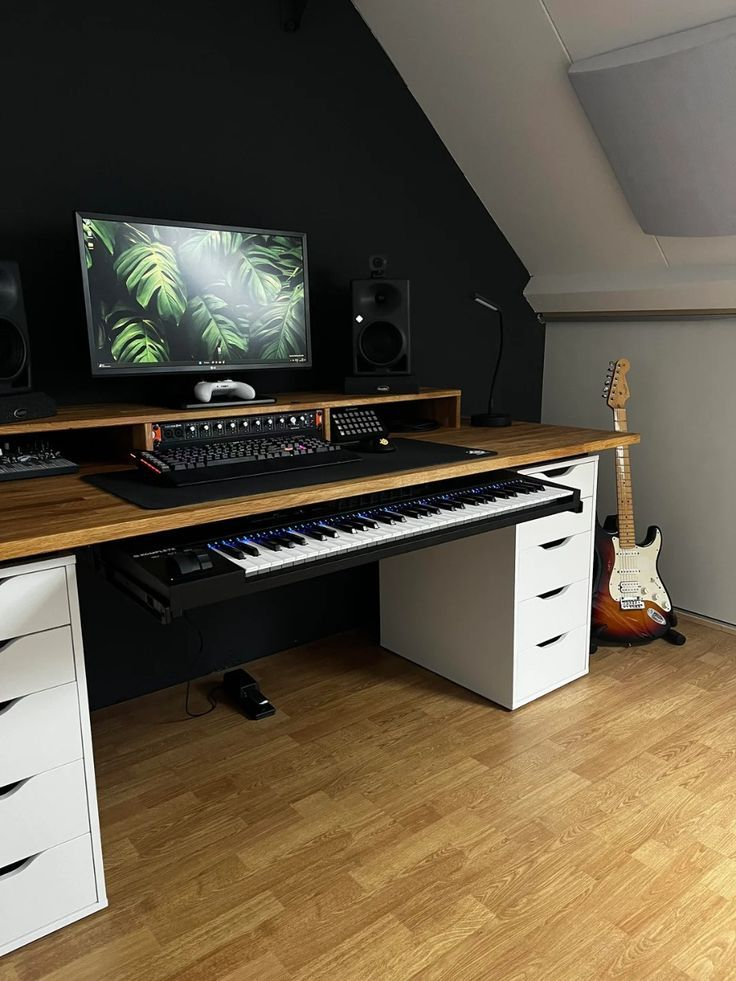
Functional studio design benefits greatly from dual-purpose furniture that conserves space while serving multiple needs. Options like storage ottomans, convertible benches, or seats with hidden compartments offer both seating and organizational benefits, ideal for compact music production areas. These pieces accommodate cables, pedals, sheet music, or small instruments, ensuring essential tools remain close without cluttering work zones. Select models designed with durable upholstery and padding deliver comfort during long mixing or recording sessions. Additionally, dual-purpose desks transform into standing workstations, promoting ergonomic benefits while enhancing productivity. Utilizing furniture that performs more than one role reduces the need for excessive shelving or storage units, preserving valuable floor space. Thoughtful placement of these pieces helps maintain a streamlined workflow and prevents congestion. This multifunctional approach aligns with efficient studio setups, supporting both creative processes and practical storage requirements. For producers working in smaller environments, dual-purpose furniture becomes an indispensable component of smart studio planning.
Under-Keyboard Sliding Tray
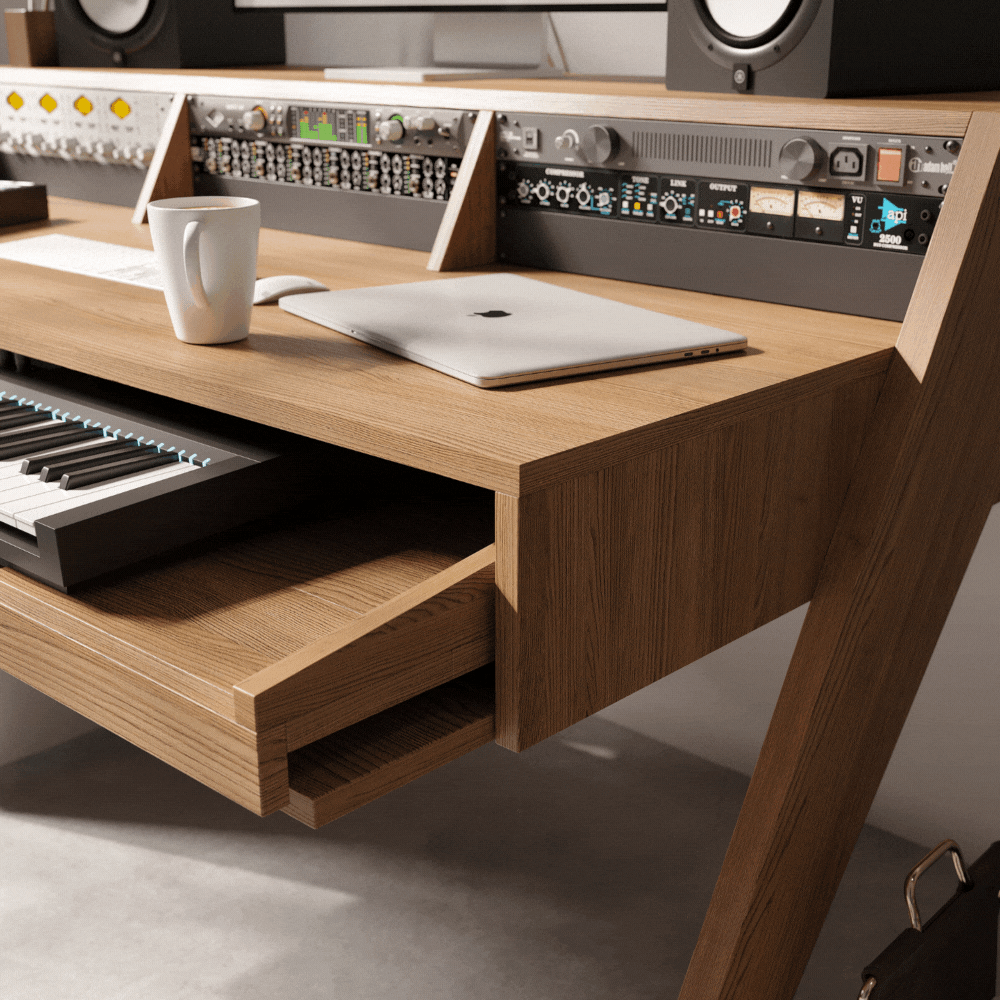
Integrating an under-keyboard sliding tray maximizes desk space and improves ergonomics in small music studios. This discreet feature allows MIDI keyboards, controllers, or computer keyboards to slide out smoothly when needed and retract completely when not in use, clearing the main workstation for other tasks. Trays made from durable materials with smooth gliding mechanisms ensure stability while protecting delicate equipment. The design supports proper posture during extended production sessions, reducing wrist and arm strain. Installing a tray with adjustable height adds further comfort customization. Paired with efficient cable routing, this setup keeps wires organized and out of sight, maintaining a clean and professional appearance. Sliding trays also protect gear from accidental spills or impacts, extending equipment longevity. Producers can alternate between typing, editing, or playing instruments without rearranging their workspace. For compact studio environments, under-keyboard trays offer a seamless blend of practicality and organization, supporting an efficient, clutter-free creative flow.
Soundproof Curtains
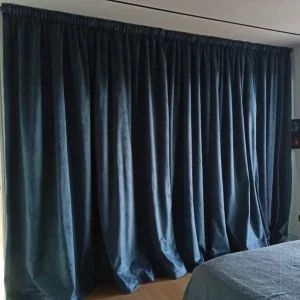
Thick soundproof curtains significantly improve acoustic control in small music studios while offering flexible coverage for windows or doorways. These heavy-duty curtains help absorb sound reflections, reduce outside noise interference, and prevent audio leakage, crucial for maintaining clean recordings. Materials like dense polyester, velvet, or multi-layered composites block high and low frequencies effectively, creating a more controlled sound environment. Installing ceiling-mounted tracks allows the curtains to glide effortlessly, providing coverage only when necessary and freeing up space during mixing or mastering sessions. Beyond acoustic benefits, these curtains enhance privacy and contribute to the studio’s aesthetic appeal with customizable colors or textures. They also double as light blockers, eliminating glare on monitors or equipment screens. Combining soundproof curtains with other acoustic treatments like wall panels or bass traps optimizes studio performance. For compact production spaces, this adaptable solution delivers professional sound insulation without requiring permanent structural modifications or expensive renovations.
Compact Monitor Stands

Sturdy yet compact monitor stands enhance sound accuracy and desk organization in small music studios. Elevating studio monitors off the desk surface minimizes unwanted vibrations and reflections, resulting in clearer sound and more precise mixing. Space-saving stands crafted from steel or acoustic foam provide excellent isolation while supporting the weight of professional-grade speakers. Adjustable height and angle options allow producers to position monitors at optimal ear level, improving sound imaging and reducing listening fatigue during long sessions. Some models include cable management features that keep wires hidden, contributing to a cleaner workspace. Compact stands also free up valuable desk space, making room for MIDI controllers, mixing consoles, or recording accessories. Selecting stands with a sleek, minimalist design ensures they blend seamlessly into any studio setup without overwhelming the visual flow. For music producers working within limited square footage, compact monitor stands deliver both functional and acoustic advantages crucial for professional production.
Integrated Cable Management
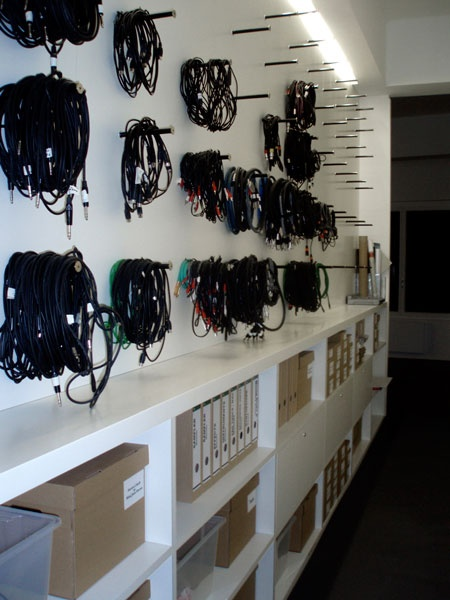
Tidy cable organization is essential for efficient studio workflow, and integrated cable management systems provide a streamlined solution. Utilizing built-in cable trays, clips, or channels prevents tangles, reduces tripping hazards, and protects wires from wear and tear. These systems keep power cords, audio cables, and patch leads neatly routed along walls, under desks, or behind equipment racks, preserving the studio’s professional appearance. Effective cable management also simplifies troubleshooting and equipment swapping, saving valuable time during recording or mixing sessions. Materials like metal, plastic, or flexible mesh tubing ensure durability while accommodating various cable types and sizes. Combining this setup with color-coded labels further enhances efficiency, especially during complex audio projects. Integrated solutions maintain signal integrity by separating power and audio lines, reducing interference and noise issues. For compact music studios where space is limited, investing in comprehensive cable management not only boosts organization but also extends the lifespan of essential gear.
Foldable Sound Isolation Booth
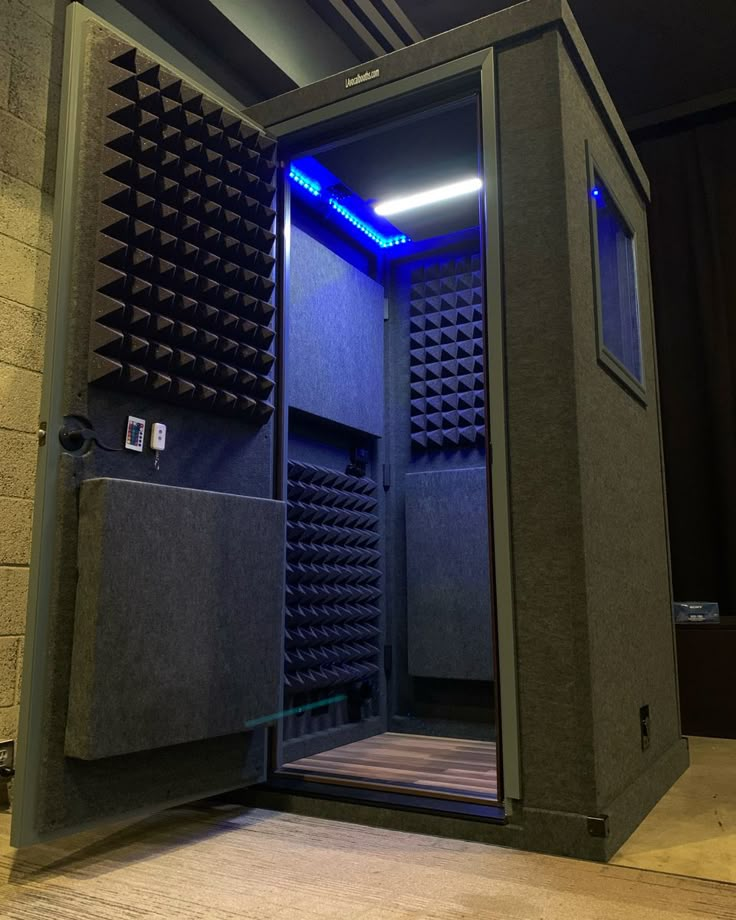
Portable sound isolation booths with foldable designs offer a practical solution for achieving cleaner vocal or instrument recordings in small music studios. These collapsible enclosures create a controlled acoustic space, minimizing background noise, reverberations, and external sound interference. Made from high-density foam, sound blankets, or metal frames with acoustic panels, foldable booths deliver professional-grade isolation without requiring permanent construction. Lightweight materials ensure easy setup, breakdown, and storage, making them ideal for studios with flexible layouts or shared spaces. The ability to deploy the booth only when needed helps maintain open floor plans, maximizing available space during mixing or production tasks. Many designs also feature ventilation flaps or windows for comfort during longer recording sessions. Foldable booths improve sound capture quality, reducing post-production editing time and ensuring more natural recordings. For producers seeking portable acoustic solutions, this adaptable setup enhances recording precision while preserving the functionality and flexibility of compact studio environments.
LED Task Lighting
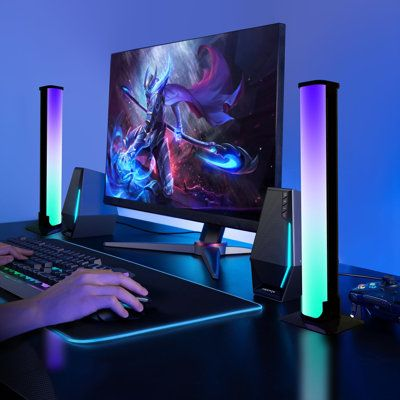
Proper lighting is essential for maintaining focus and reducing eye strain in small music studios, and LED task lighting offers an efficient, energy-saving solution. Adjustable LED fixtures provide bright, directional illumination for work areas, making it easier to see mixing boards, sheet music, or equipment settings during long production hours. Modern designs with dimmable features allow users to customize light intensity based on the task, mood, or time of day. Clamp-on or wall-mounted LED lights save desk space while keeping essential areas well-lit without glare or shadows. Low heat emission from LED lights ensures comfortable working conditions, particularly in confined spaces. Integrated USB charging ports found in some models add further utility by powering small devices or accessories. Energy efficiency also reduces electricity costs, supporting sustainable studio practices. By choosing sleek, minimalist LED lighting, music producers maintain a clean and professional aesthetic, fostering a comfortable and productive creative environment.
Personalized Wall Art

Infusing character and inspiration into a music studio becomes effortless with personalized wall art that reflects individual style and musical influences. Framed album covers, custom prints of favorite instruments, or vibrant soundwave canvases transform plain walls into an inspiring visual backdrop. Beyond aesthetics, this decor fosters a creative atmosphere where producers feel motivated during long recording or mixing sessions. Acoustic-friendly materials such as fabric prints or canvases double as minor sound absorption elements, subtly contributing to the studio’s audio quality. Carefully positioning artwork prevents overcrowding while enhancing the space’s overall appeal. Music-themed quotes, artist portraits, or vintage concert posters also create conversation starters when clients visit, adding a professional yet personal touch. Incorporating personalized art allows producers to connect emotionally with their workspace, reinforcing their passion for music. For small studios, this affordable design element balances creativity and functionality, ensuring the environment remains welcoming, stimulating, and uniquely tailored to its creator.
